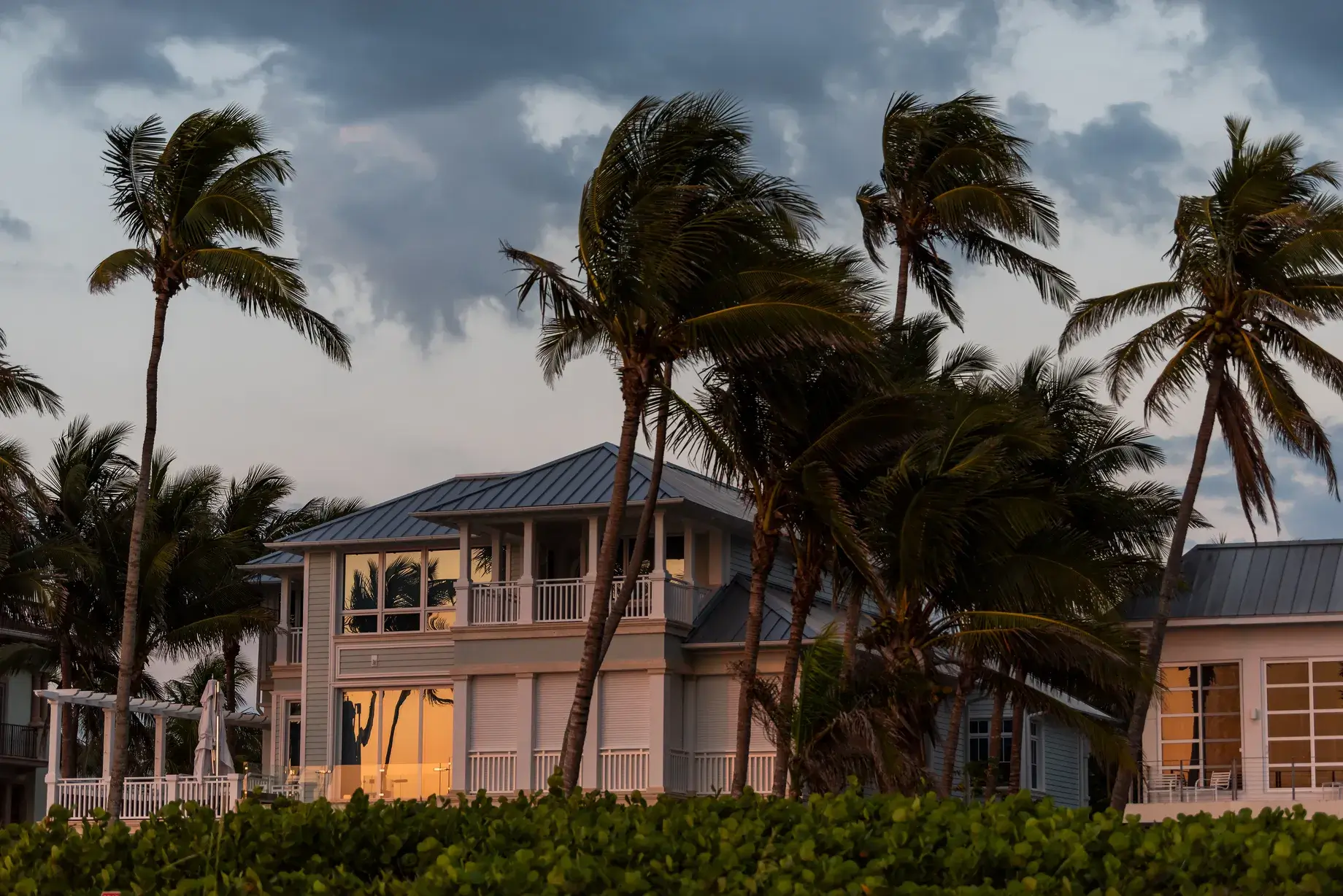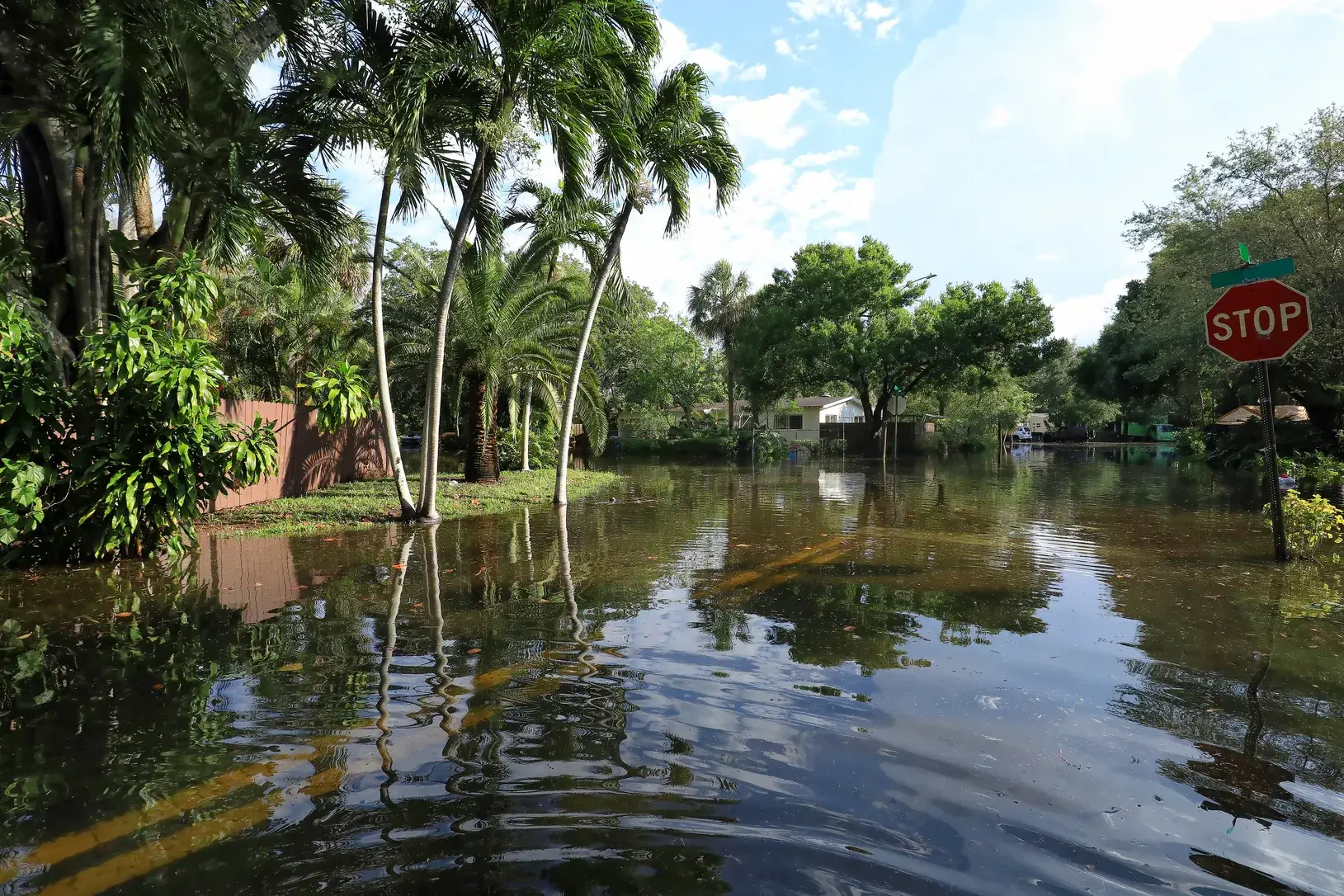Safeguarding Your Sunshine State Home Against Unforeseen Floods
In a state known for its sunny beaches and tropical climate, the 2023 floods were a stark reminder of Florida’s unpredictable weather patterns. This event emphasized that while Florida is a paradise, it’s also vulnerable. Many homeowners mistakenly believe their commercial property insurance covers flood damages, leaving them unprepared for such disasters. At Peoples First Insurance, we’re dedicated to ensuring you have the coverage you need to face these unpredictable challenges head-on.
Key Takeaways:
- The Importance of Flood Insurance in Florida: With unpredictable weather and a history of significant floods, securing your home with flood insurance is crucial for peace of mind.
- Differences Between Standard Homeowner’s Policy and Flood Insurance: While homeowner’s policies might cover water damage from broken pipes, they usually don’t cover flood damage from natural disasters.
- Private Versus NFIP Flood Insurance: The National Flood Insurance Program (NFIP) offers standard coverage, but private flood insurance can provide additional options and potentially better rates.
- Factors Affecting Flood Insurance Cost in Florida: Your home’s location, construction type, elevation, and proximity to water sources can all impact your insurance premium.
Get a Residential Flood Insurance Quote for PANAMA CITY and TALLAHASSEE Today!
Whether you’re ready to get a personalized quote for your Residential Flood Insurance or simply have questions about your coverage, our team at Peoples First Insurance is here to help. No matter where you are in your insurance journey, feel free to reach out to us for expert guidance and assistance tailored to your unique needs.
Is Your Home Protected Against Florida’s Flooding?
Florida’s pristine beaches and scenic waterways are iconic. However, the same beauty that attracts residents and tourists alike is also a source of potential risk. Flooding, driven by storm surges, torrential rains, or hurricanes, can be devastating, and many homeowners are caught off guard when they find out too late that their standard insurance policies don’t cover flood damage.
A common misconception is that a standard homeowner’s insurance policy provides coverage for all types of water damage. In reality, while these policies might cover water damage due to issues like burst pipes, they typically exclude damage caused by flooding from natural disasters. Given the increasing unpredictability of weather patterns and the events of flooding in Florida in 2023, there’s an urgency to understand and act upon the protection gaps in your insurance coverage.
Do I need flood insurance in Florida? Determining Your Risks
Whether your home sits along the coastline or is tucked away inland, it’s crucial to assess its vulnerability to flooding. Several factors can increase a property’s risk:
- Proximity to Water: Homes near beaches, rivers, or in low-lying areas are naturally at a higher risk.
- Land Elevation: Properties at lower elevations can be more susceptible to floodwaters, especially during heavy rains.
- Drainage Systems: Inadequate or outdated drainage systems can lead to water pooling and subsequent flooding.
To help homeowners determine their flood risk, the Federal Emergency Management Agency (FEMA) has created detailed flood maps. Florida residents can use these maps to check the risk profile of their properties. These maps categorize regions into different flood zones based on historical data, topographical surveys, and other factors.
If you discover that your home is in a high-risk flood zone, or even if it isn’t but you want the peace of mind, obtaining a dedicated flood insurance policy becomes a prudent decision. After all, it’s not just about protecting a building; it’s about safeguarding your sanctuary.
Unraveling the Cost of Flood Insurance in Florida
Florida’s unique topography and climate make flood insurance a topic of perennial interest. The average cost of flood insurance in Florida varies depending on multiple factors, including the home’s location, size, construction type, and flood zone. With the introduction of the Risk Rating 2.0 system, the Federal Emergency Management Agency (FEMA) has transformed the way rates are determined. Instead of broad-based rate zones, this new approach takes a more granular look at individual property risks, often leading to more accurate and sometimes higher premiums. This change has underscored the need for homeowners to be proactive in understanding their policy costs.
Private Flood Insurance vs. NFIP Flood Insurance
When considering flood insurance in Florida, homeowners have two main avenues: policies backed by the National Flood Insurance Program (NFIP) and those offered by private insurers. NFIP policies are government-backed and tend to have standardized rates and coverages. They’re reliable but might not offer as much flexibility in terms of coverage limits or policy customization. On the other hand, private flood insurance often provides more tailored solutions, potentially covering more scenarios or offering higher limits. However, they might come with higher premiums. Peoples First Insurance is adept at guiding homeowners through this maze, ensuring that they choose the coverage that best suits their needs and budget.
Flood Insurance for Citizens Insurance Customers
Recent changes have brought flood insurance into sharp focus for Citizens Insurance customers. A new mandate requires these policyholders to carry a certain level of flood coverage, with implementation rolled out in stages. Homeowners in the most high-risk zones are the first to be affected by this change. This mandate, while ensuring protection, may also raise concerns regarding premiums and policy choices. For those looking to opt-out of Citizens or seeking alternatives, it’s crucial to shop wisely and consider the myriad options available. A trusted partner like Peoples First Insurance can provide invaluable insights during such transitions.
What Does Residential Flood Insurance Cover?
Residential flood insurance is a specialized type of coverage tailored to shield homeowners from the potentially devastating financial consequences of flooding. The extent of the coverage generally encompasses two main categories: content coverage and structural coverage. Let’s delve deeper into what each category protects.
Contents Coverage
When floodwaters rush in, they often bring extensive damage to a home’s contents. Thankfully, flood insurance typically covers a range of items within your home. This includes furniture, which can be significantly damaged by water, electronics that can be rendered useless, and even clothing. Additionally, more valuable items such as jewelry and artwork are typically included under contents coverage, though there might be limits to the coverage amount, necessitating additional riders for exceptionally high-value items.
Structural Coverage
The integrity of your home’s structure is vital, and floodwaters can compromise that integrity in a myriad of ways. Structural coverage under a flood insurance policy addresses damages to the very bones of your home. This means protection for the foundation and the essential systems that make your home habitable. Coverage usually includes repairs to damaged electrical systems, plumbing networks, HVAC units, built-in appliances, and even staircases. Ensuring that these critical structural components are protected can mean the difference between a minor inconvenience and a complete home loss.
What Florida Residential Flood Insurance Doesn’t Cover
While flood insurance offers invaluable protection against flood-related damages, there are certain exceptions and exclusions that homeowners should be aware of. Typically, flood insurance doesn’t cover damages resulting from earth movement, even if the movement is caused by floodwaters. Additionally, policyholders might find that external properties such as swimming pools, decks, and landscaping are not covered. Moisture or mold damage that could’ve been prevented by the homeowner is another exclusion. Policies also usually exclude losses from business interruptions or loss of access to the insured property. This underscores the need for a meticulous review of your policy. The specialists at Peoples First are here to guide you, ensuring your policy matches your expectations and needs.
Policy Period and Timing: Don’t Get Caught Off Guard
When it comes to flood insurance, timing is everything. Most flood insurance policies have a waiting period, commonly 30 days, from the date of purchase before the coverage becomes effective. This means that you cannot rush to buy a policy as a storm approaches and expect immediate coverage. This delay is designed to prevent individuals from buying insurance only when they believe they are at immediate risk. The unpredictability of Florida’s weather patterns, combined with its susceptibility to tropical storms and hurricanes, makes it crucial for homeowners to secure flood insurance proactively. Waiting until a storm is imminent can leave you vulnerable and could lead to devastating financial consequences. Always be ahead of the curve, ensuring your home is protected well in advance.
Securing the Future of Your Florida Home
The unpredictability of Florida’s climate, coupled with recent events such as the increased flooding in 2023, underscores the essential nature of flood insurance. With the increasing frequency of flooding events, homeowners can no longer afford to view flood insurance as optional. The financial implications of remaining unprotected can be dire; flood damage can be costly, and without insurance, homeowners can find themselves bearing these costs alone. It’s not just about the potential damages—it’s about the peace of mind that comes with knowing your investment is secure.
We urge all Florida residents to review their current insurance standings. Your home is more than just a structure; it holds memories, dreams, and futures. Protect it.
FAQs
What companies sell commercial flood insurance?
Several companies offer commercial flood insurance, including major national providers and specialized regional ones. Peoples First can guide you through your options tailored to Florida’s specifics.
How long is the policy period for NFIP flood insurance?
NFIP flood insurance policies are typically issued for a 12-month period.
Do renters need flood insurance in Florida?
While not mandated, renters in Florida are advised to consider flood insurance to protect their personal belongings, especially if living in flood-prone areas.
Do I need condo flood insurance in Florida?
If the condo is located in a high-risk flood zone and has a mortgage from a federally regulated or insured lender, then flood insurance is typically required. However, while the condo association may have a master policy, individual unit owners might still consider additional coverage for their belongings.
Why is flood insurance so expensive in Florida?
Florida’s susceptibility to hurricanes, tropical storms, and its vast coastline contribute to its higher flood risk, driving up the cost of flood insurance. Additionally, certain areas have more flood claims, influencing insurance rates.
What flood zones require flood insurance in Florida?
Areas designated as high-risk zones, often labeled as A or V zones on Flood Insurance Rate Maps (FIRM), typically require flood insurance if the property has a federally backed mortgage. However, given Florida’s flood history, it’s advisable for properties in all zones to have coverage.



